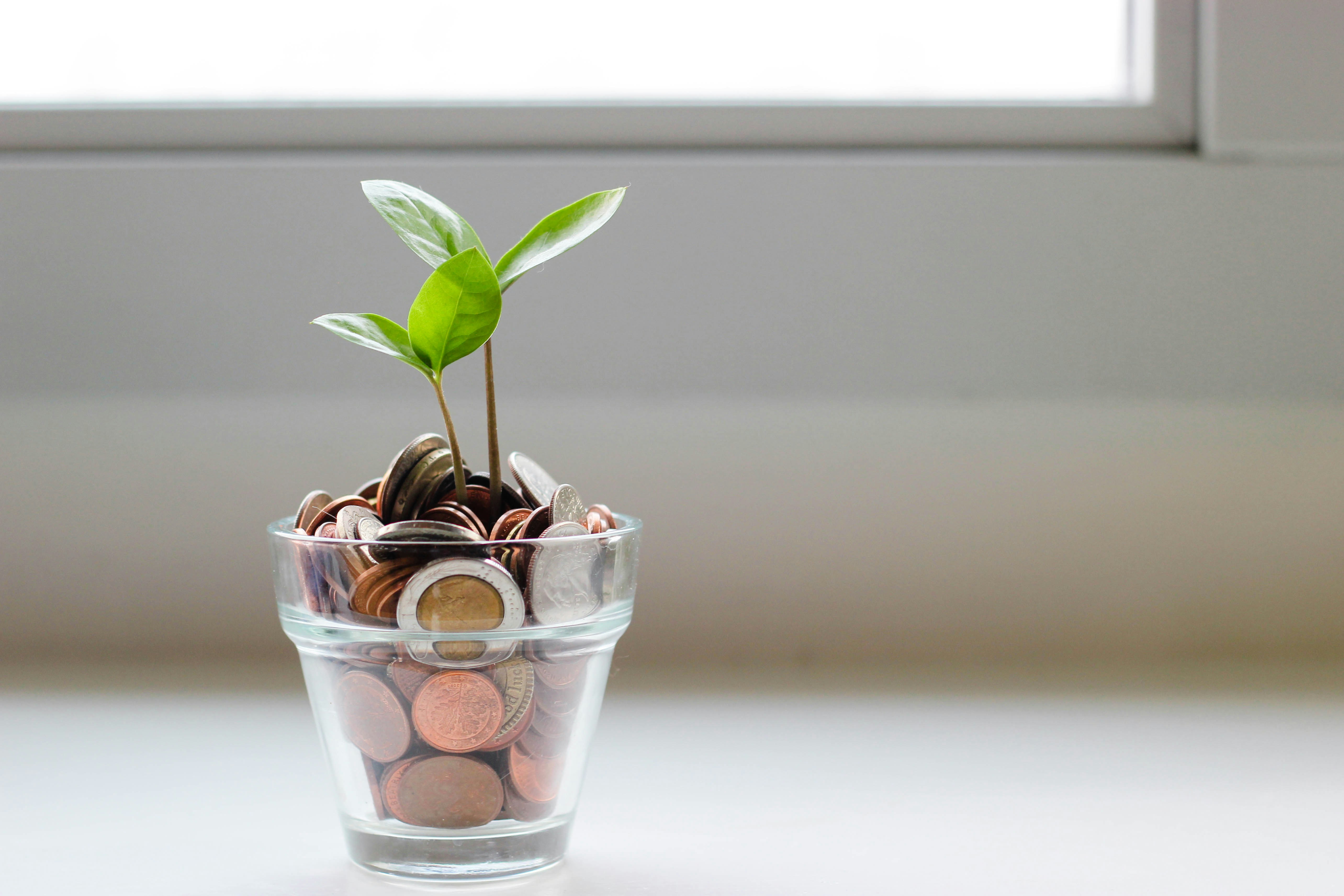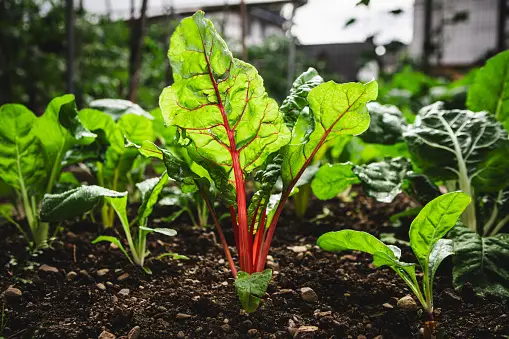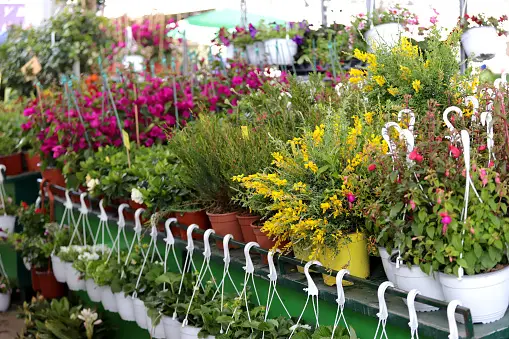Learn how you can incorporate edible fruits in your beauty garden at home to make it more appealing.
From Ornamental to Edibles: A Guide to Incorporating Vegetables into Your Garden
Gardens have the power to transform outdoor spaces, offering vibrant splashes of colour, fragrant aromas, and a tranquil escape. But beyond aesthetics, gardens can also be a source of fresh, delicious, and nutritious food. This article delves into the exciting world of incorporating edible vegetables into your existing landscape, creating a garden that is both beautiful and bountiful.
Planning Your Edible Paradise
Before embarking on your vegetable gardening journey, it's crucial to plan effectively. Here are some key aspects to consider:
- Know Your Climate: Research your USDA Plant Hardiness Zone, which indicates the average annual minimum temperature in your region. This information is vital for choosing vegetables that will thrive in your climate.
- Sunlight Availability: Most vegetables require at least 6-8 hours of direct sunlight daily. Observe your garden throughout the day to map out sunlit areas and plan accordingly.
- Soil Quality: Healthy soil is the foundation for healthy plants. Conduct a simple soil test to assess pH levels and nutrient content. Amending your soil with compost or organic matter can significantly improve its fertility.
- Space Constraints: Not everyone has sprawling acres of land. Consider container gardening for smaller spaces, or employ vertical gardening techniques to maximize vertical space.
Selecting the Stars of Your Garden
With your planning in place, it's time to choose your vegetable cast! Here's a breakdown of popular options categorized by season:
Cool-Season Vegetables (Planted in Early Spring or Fall)
- Leafy Greens: Arugula, lettuce, kale, spinach, and Swiss chard provide a constant supply of vitamins and minerals. They are fast-growing and tolerate cooler temperatures.
- Root Vegetables: Beets, carrots, radishes, and turnips offer a satisfying crunch and versatility in the kitchen.
- Cole Crops: Broccoli, Brussels sprouts, cabbage, and cauliflower are cool-weather staples that add visual interest with their unique shapes.
- Peas: Sweet and crunchy peas are a delightful addition to salads and stir-fries. Opt for shelling varieties for the full experience of harvesting the peas from the pod.
Warm-Season Vegetables (Planted after the Last Frost)
- Tomatoes: The quintessential summer fruit (yes, botanically a fruit!), tomatoes come in a dizzying array of varieties, from cherry to heirloom.
- Peppers: Bell peppers, chili peppers, and jalapeños add a spectrum of heat and flavor to dishes.
- Cucumbers: Refreshing and cooling, cucumbers are perfect for summer salads or pickling.
- Squash and Zucchini: Versatile and prolific, these summer squashes can be enjoyed in numerous ways.
- Beans: Green beans, snap peas, and lima beans are climbing or bush varieties, offering options for all garden layouts.
- Eggplant: This beautiful nightshade vegetable adds a unique flavor and texture to main dishes.
Don't Forget the Herbs!
Fresh herbs elevate any dish and are surprisingly easy to grow. Consider incorporating basil, parsley, cilantro, mint, oregano, thyme, and rosemary into your garden design.
Pro Tip: When selecting vegetables, factor in your family's preferences and cooking style. Opt for vegetables you'll enjoy consuming to ensure you reap the rewards of your gardening efforts.
Designing with Function and Beauty
Now comes the fun part - integrating your chosen vegetables into a visually appealing garden layout. Here are some design tips:
- Companion Planting: Certain vegetables thrive when planted near each other. Research companion planting strategies to benefit from natural pest control and improved growth.
- Interplanting: Utilize the space between slow-maturing vegetables by planting faster-growing crops in the gaps. This maximizes space usage.
- Create Borders: Leafy greens like lettuce and spinach make attractive borders around flower beds, adding a pop of color and texture.
- Vertical Gardening: Utilize trellises, fences, or hanging baskets for climbing vegetables like tomatoes, beans, and peas. This saves space and creates a vertical element.
- Edible Flowers: Nasturtiums, pansies, and borage not only add beauty but are also edible, adding a touch of elegance to salads.
Pro Tip: Consider incorporating ornamental elements like flowering plants or decorative grasses to create a cohesive and visually stunning garden.
Planting and Tending Your Bountiful Harvest
With your garden bed prepared and seeds or seedlings chosen, it's time for planting! Follow the specific planting instructions for each vegetable variety, ensuring proper spacing and depth.
Here are some essential care tips for your vegetable garden:
Weeding may seem like a tedious chore, but it's crucial for healthy plant growth. Regularly remove weeds that compete with your vegetables for water, nutrients, and sunlight.
- Mulching: Apply a layer of organic mulch like straw, wood chips, or compost around your plants. Mulch helps retain moisture, suppress weeds, regulate soil temperature, and gradually improve soil quality as it decomposes.
- Fertilizing: While healthy soil provides most of the nutrients your vegetables need, supplemental feeding might be necessary during the growing season. Use organic fertilizers or compost teas and follow the application instructions carefully.
- Pest and Disease Control: Keep an eye out for common pests and diseases that can affect your vegetables. Many natural methods can be employed for control, such as insecticidal soap sprays or neem oil applications. For more severe infestations, consider organic or biological controls before resorting to chemical pesticides.
- Staking and Trellising: Provide support for climbing vegetables like tomatoes, beans, and cucumbers. Stakes, cages, or trellises will help the plants grow upright, maximizing space usage and improving fruit production.
- Harvesting: Harvest your vegetables at their peak ripeness for the best flavor and nutritional value. Refer to the specific harvesting instructions for each vegetable variety to ensure you're picking at the optimal time.
Pro Tip: Regularly monitor your garden and address any issues promptly. Early intervention can prevent problems from escalating and ensure a bountiful harvest.
Extending Your Harvest Season
Want to enjoy fresh vegetables for a longer period? Here are some techniques to consider:
- Succession Planting: Plant fast-maturing vegetables followed by slower-maturing ones in the same bed throughout the season. This maximizes bed usage and extends your harvest window.
- Fall Planting: Depending on your climate, you can plant cool-season vegetables again in the fall for a late-season harvest.
- Season Extension Techniques: Utilize row covers or cold frames to protect cool-season crops from unexpected frosts, extending their growing season in the spring and fall.
- Container Gardening: Grow vegetables in containers that can be easily moved indoors or to a sheltered location during periods of cold weather.
Companion Planting for a Thriving Ecosystem
Nature provides solutions for many gardening challenges. Companion planting is a technique that utilizes the beneficial relationships between certain plants. Here are some key principles:
- Trap Cropping: Plant decoy crops like nasturtiums or radishes to attract pests away from your main vegetable crops.
- Beneficial Repellent Plants: Certain herbs like mint or rosemary can deter specific pests with their strong aromas.
- Pollinator Attractants: Include flowering plants like dill, borage, or calendula to attract pollinators like bees and butterflies, which are crucial for fruit and vegetable production.
- Nitrogen Fixers: Leguminous plants like peas and beans fix nitrogen in the soil, making it available to other plants in your garden.
By incorporating companion planting strategies, you can create a balanced ecosystem in your garden, promoting healthy plant growth and reducing reliance on chemical pesticides.
Going Beyond the Basics: Advanced Techniques for Enthusiastic Gardeners
Ready to take your vegetable gardening to the next level? Here are some advanced techniques to explore:
- Seed Saving: Collect seeds from open-pollinated heirloom vegetables to save money and preserve unique varieties. Research proper seed-saving techniques for each vegetable variety.
- Crop Rotation: Rotate your vegetable crops from year to year to prevent soil-borne diseases and nutrient depletion.
- Square Foot Gardening: This space-saving method utilizes a grid system to maximize yield in a small area.
- Hydroponics: This method involves growing plants without soil, using a nutrient-rich water solution. While requiring more setup, it offers precise control over growing conditions.
Pro Tip: Continuously educate yourself! There's always more to learn about vegetable gardening. Read gardening books and magazines, attend workshops, and connect with other gardening enthusiasts to expand your knowledge and refine your skills.
Conclusion
The journey of vegetable gardening is a continuous cycle of learning, nurturing, and reaping the rewards of your efforts. As you delve deeper into this practice, you'll discover a world brimming with possibilities. From the vibrant hues of blossoming vegetables to the delectable flavors gracing your table, your garden becomes a testament to the interconnectedness of nature and human ingenuity.
Embrace the unexpected detours along the way. A surprise downpour might necessitate adjusting your watering schedule, while an unexpected infestation could lead you to explore organic pest control methods. These challenges are opportunities to deepen your understanding of the intricate dance between plants, soil, and the environment.
There's immense satisfaction in harvesting your homegrown vegetables. The first bite of a sun-warmed tomato, the sweetness of a freshly picked pea, or the crisp crunch of homegrown lettuce is an unparalleled experience. It's a connection to the source of your food, a reminder of the time and care invested in nurturing each plant.
Vegetable gardening fosters a sense of community. Sharing your bounty with neighbors, friends, or local food banks fosters connection and generosity. It's a way to celebrate the harvest and inspire others to embark on their own gardening journeys.
As your garden flourishes, so too will your appreciation for the natural world. You'll witness the delicate balance of an ecosystem teeming with life - pollinators flitting among flowers, earthworms enriching the soil, and beneficial insects keeping pests at bay. This newfound respect for nature translates into a more sustainable approach to living, encouraging conscious consumption and a desire to protect the environment.
Ultimately, vegetable gardening is a practice that nourishes not just your body but also your soul. It's a source of solace and stress relief, a space for creativity and exploration. Whether you tend to a sprawling plot or a modest container garden on your balcony, the therapeutic benefits of nurturing life are undeniable.
So, step outside, feel the warmth of the sun on your skin, and delve into the world of vegetable gardening. With a little planning, dedication, and the knowledge gleaned from this guide, you can cultivate a thriving oasis that provides sustenance, fosters connection, and deepens your appreciation for the natural world. Let your garden be a testament to your passion, a canvas where you paint with vibrant vegetables, and a space where you reap the rewards of your efforts, one delicious harvest at a time.


























